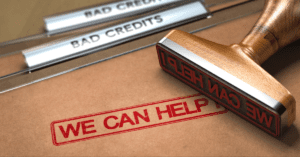Introduction
Navigating a line of credit can be complex, whether you currently have one or are considering obtaining one. Across Canada, debt levels are on the rise, prompting many to rely on lines of credit, which can sometimes worsen their financial struggles. Others face challenges due to unfavorable credit terms and are seeking ways to escape the debt trap.
As a licensed insolvency trustee, I have guided numerous Canadians through difficult financial situations. In this article, we’ll provide you with effective strategies for managing line of credit interest rates and offer practical advice to help you regain control of your finances.
Understanding Line of Credit Interest Rates in Canada
Financial terminology can be daunting, but understanding the basics of line of credit interest rates is a critical first step toward financial freedom. A line of credit is a flexible loan from banks or financial institutions that allows you to borrow up to a specified limit and pay interest only on the amount utilized.
In today’s dynamic economic climate, understanding these rates is vital. They can fluctuate based on market trends and your creditworthiness, which significantly influences your financial planning.
The Current Financial Landscape
Interest rates in Canada have experienced various trends recently. Staying informed about these trends is crucial for making well-informed financial decisions.
Financial Literacy: The Key to Managing Debt
The foundation of effective debt management is financial literacy, encompassing everything from daily budgeting to long-term financial planning.
Budgeting and Expense Tracking
The cornerstone of financial literacy involves learning how to budget and track expenses. Utilizing simple tools like budgeting apps or spreadsheets can radically transform your financial management habits.
Resources for Financial Learning
Immerse yourself in resources such as online courses, financial blogs, and seminars. Continuous education is key to making informed financial decisions.
Debt Relief Solutions: Exploring Your Options
Selecting the appropriate debt relief strategy is crucial, as every individual’s financial situation is unique. It’s not only about reducing debt but also aligning the solution with your financial goals and capabilities.
Debt Consolidation: How It Works
Debt consolidation combines multiple debts into a single loan, usually with a lower interest rate than the original debts.
Benefits: The main advantage is simplicity—you consolidate various payments into one monthly payment, simplifying your financial management. Additionally, a lower interest rate can help you save money over the life of the loan or pay off your debt more quickly.
Considerations: Qualifying for a consolidation loan typically requires a good credit score. It’s crucial to view consolidation as a step toward debt freedom rather than an opportunity to incur more debt.
Consumer Proposals
Overview: A consumer proposal is a legally binding process administered by a licensed insolvency trustee. It involves proposing a plan to your creditors where you agree to pay a portion of your debt over a specific period, or sometimes, a lump sum payment.
Benefits: This process can significantly reduce your total debt amount. It also stops all collection actions and wage garnishments. Unlike bankruptcy, you retain your assets.
Process: Your trustee will work with you to develop a proposal that’s fair and acceptable to both you and your creditors. Once accepted, you make payments to the trustee, who then distributes these to your creditors.
Bankruptcy
Understanding Bankruptcy: Most people see declaring bankruptcy as a last resort. It involves surrendering your non-exempt assets to a trustee in exchange for the elimination of most of your debts.
Implications: Bankruptcy can provide a fresh financial start, but it comes with notable consequences. It impacts your credit score significantly and stays on your credit report for several years, affecting your ability to obtain future credit.
Procedure: The process is administered by a licensed insolvency trustee who evaluates your financial situation, sells your non-exempt assets, and distributes the proceeds to your creditors. Upon completing the bankruptcy process, you are released from the debts included in the bankruptcy.
Protection from Creditors
Understanding Your Legal Rights
Harassment from creditors can be stressful. Canadian laws, such as the Consumer Protection Act, provide important safeguards. Knowing these can give you peace of mind and the confidence to negotiate with creditors.
The Role of Licensed Insolvency Trustees
We, licensed insolvency trustees, are professionals regulated by the Canadian government. Our role is to guide you through debt resolution, from negotiating with creditors to filing consumer proposals or bankruptcy.
Working with a Trustee
Engaging with a trustee can provide clarity and a structured path to becoming debt-free. It’s a collaborative journey toward financial stability.
Conclusion
Remember, managing line of credit interest rates and debt is a journey. Each step you take is a move towards financial freedom. Although the path may seem daunting, with the right knowledge and tools at your disposal, you can navigate it successfully. Furthermore, don’t hesitate to reach out for professional help; it could be the turning point in your financial story.
Click here to get debt help from a trustee!




